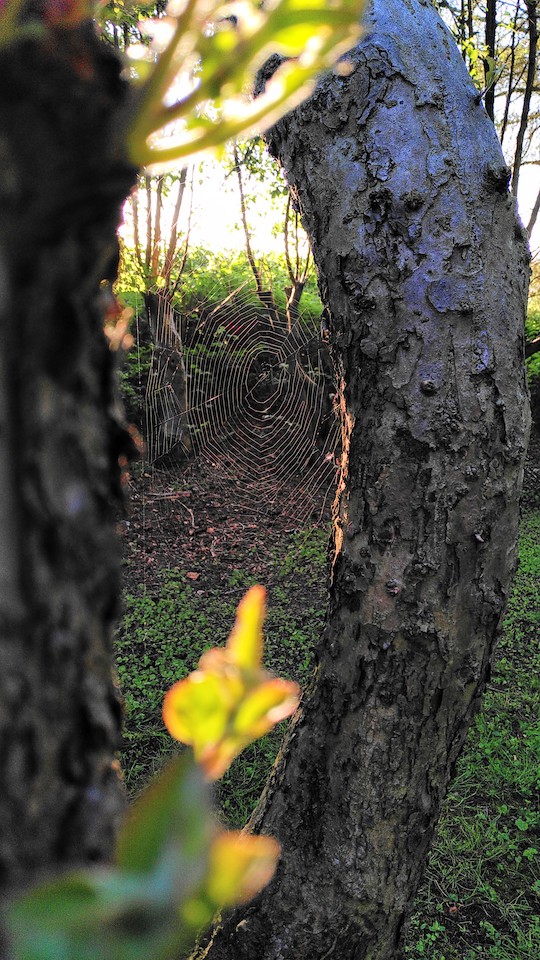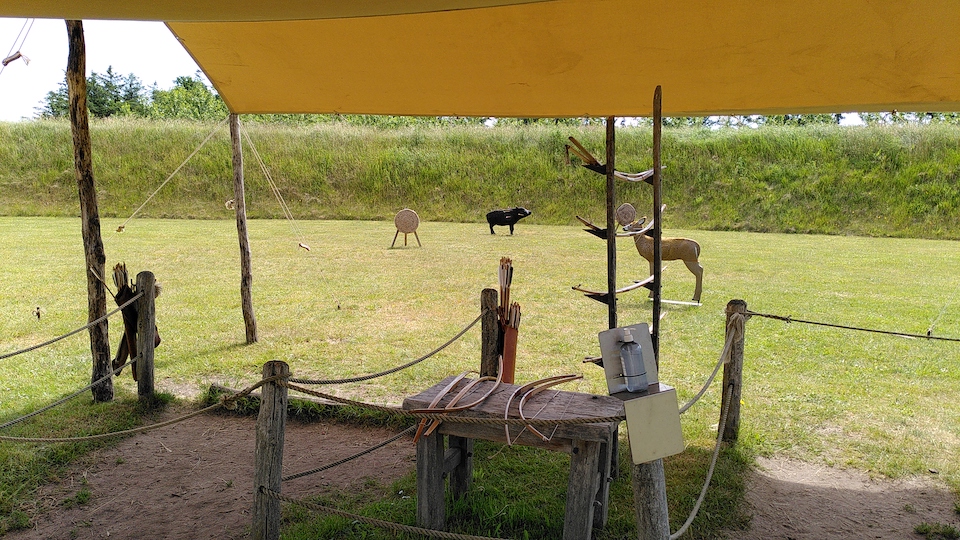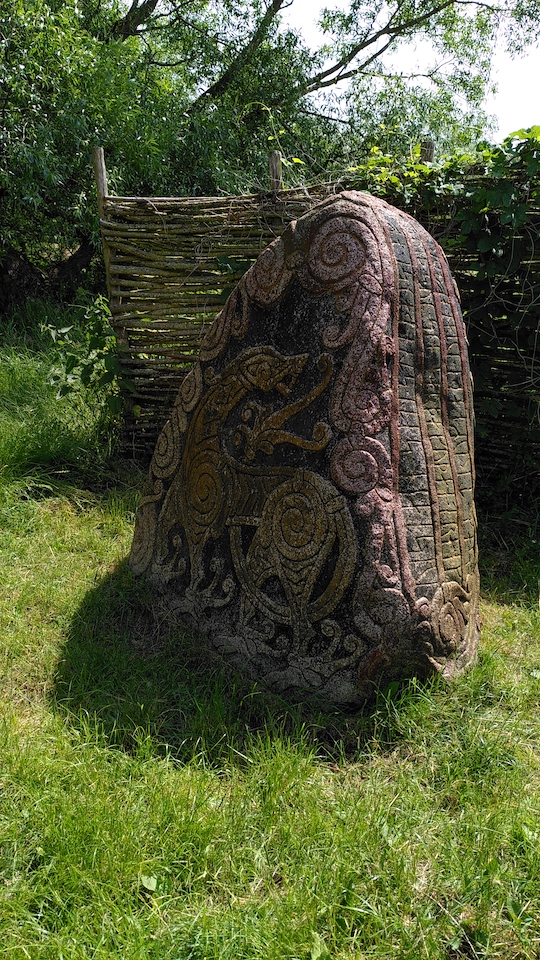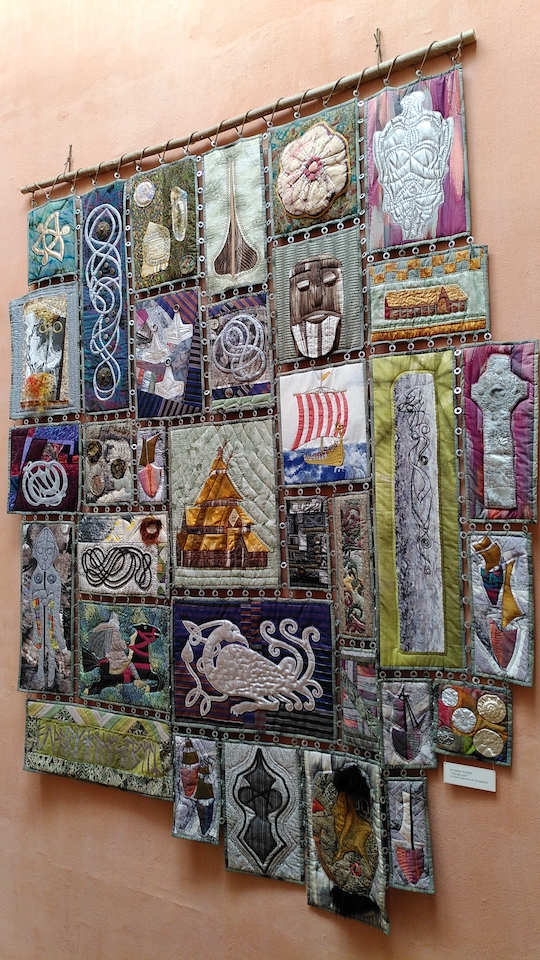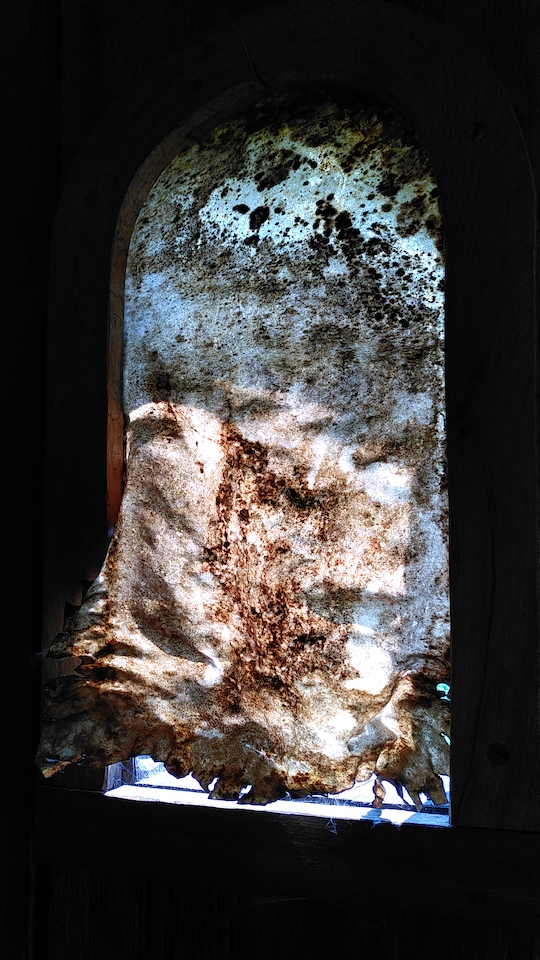Thursday, 24th June 2021
Himinbjörg eru in áttu,
From Grímnismál, “The Lay of Grímnir”, normalized text by Guðni Jónsson in 1954
en þar Heimdall
kveða valda véum;
þar vörðr goða
drekkr í væru ranni
glaðr inn góða mjöð.
27 years ago in high school, some friends in my class wanted to create a band. I’ll keep the anecdotes for another time, save for our chosen band name: for some reason, “The Urban Bambi Punchers” (yes, there’s another anecdote about the origin of this name!) won against “Pyrrhic Victory” and “Dawn Chorus”.
27 years later, I awaken to an actual Dawn Chorus of chirping birdsong in Himinbjörg, a castle in the sky at the end of the rainbow bridge Bifröst, where Heimdall dwells – or rather in my own version of Himinbjörg, a small cabin high up in a tree on Danish lands. Even with rather little sleep I am feeling wondrously refreshed, enjoying the muesli that has been soaking in oat milk during the night, then swinging in one of the hanging chairs under the trees while singing a belated happy birthday message to Aunt Michi. My host comes along to say farewell. I take a shower in the main house, then return to the treehouse to pack up. Sitting at the base of the tree, I play songs to express my gratitude for its support and to bid this magnificent sentient being farewell.
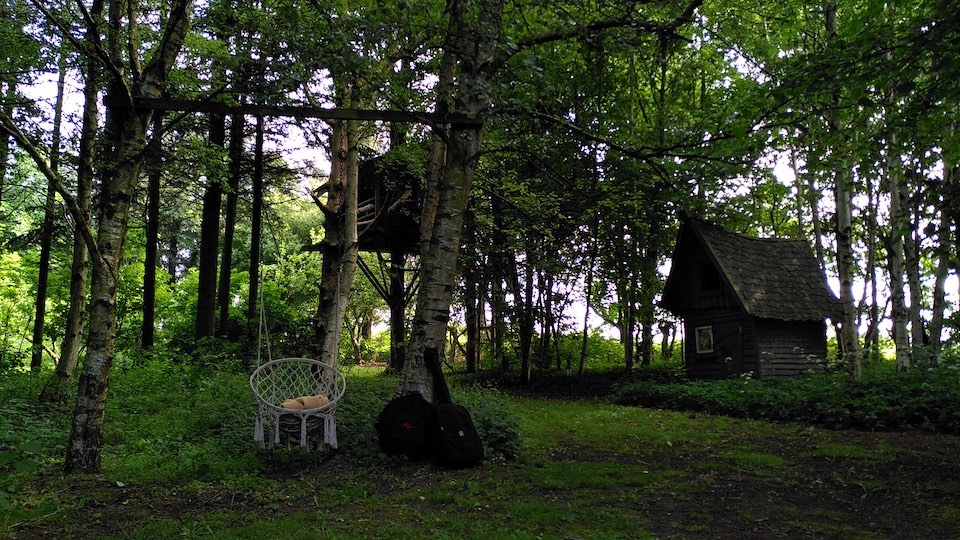
From the treehouse it is a reasonably short drive to the Ribe Vikingecenter. The empty parking lot indicates that new arrivals are among the first visitors today. Whilst applying sunscreen on the most exposed parts of this pale Austrian skin, an older German couple parks their car next to mine, and we begin to chat. It turns out that they intend to move from Germany to Denmark within the next few years! The husband tells me all about housing, cars, loans, regulations – especially how affordable houses are around here. it feels like a strong serendipitous sign that whispers, “yes, Wolfgang, soon you shall move to these lands.”
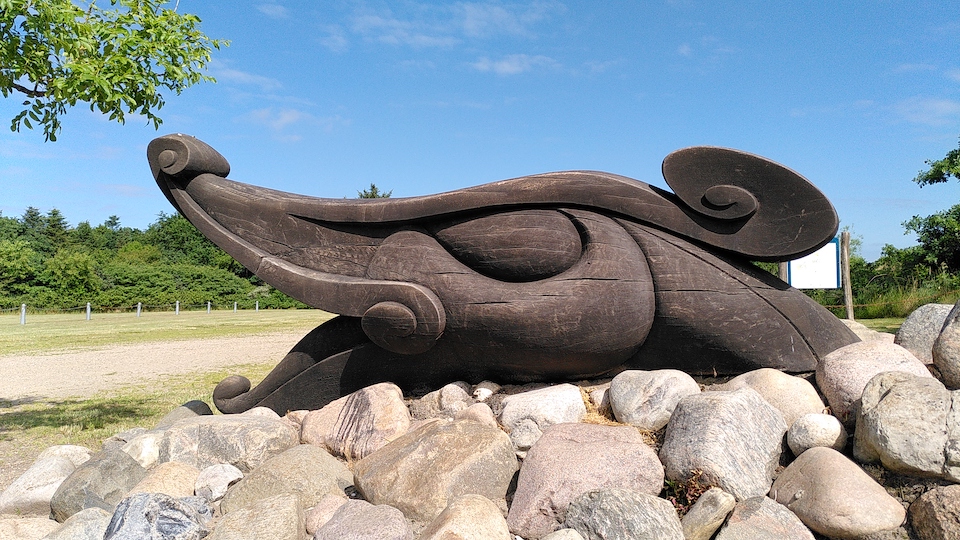
Next to the entrance, a sturdy man builds a small new house from woodden planks. Upon my interrogation, he reveals his secrets and confides to me that all houses here are constructed in the old Viking ways, with only the least possible amount of help through modern tools. Armed with such knowledge, when you ever set foot into a traditional Viking Longhouse, you will likely be as impressed as I am! Despite its dark interior, with only small windows allowing sunlight to enter, and with the illuminating fire of small candles, this place feels cosy.
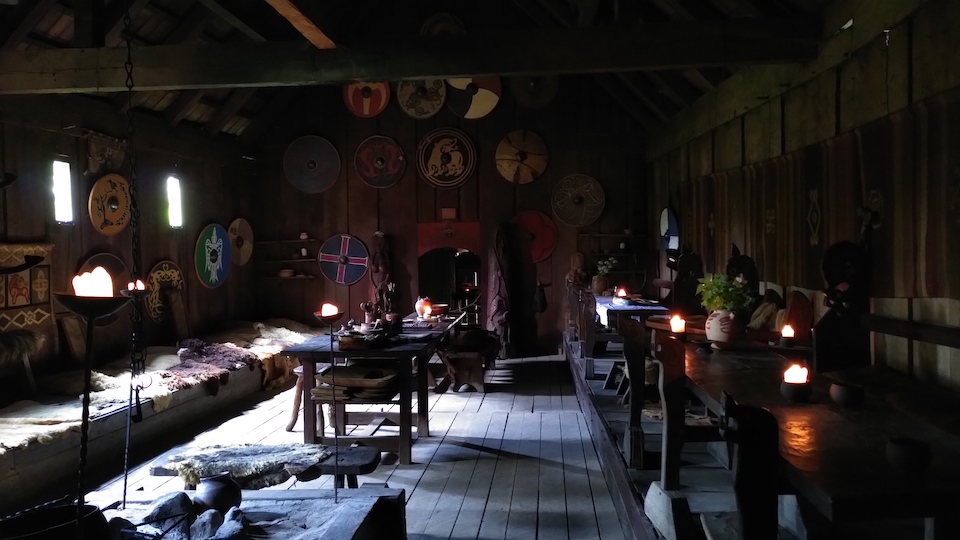
I take interest in the nearby farmhouse while a Viking villagers’ procession with music unfolds nearby. The farmers among that group are bringing animals to the farmhouse, most notably two ancient huge cattle, each of whom is easily twice the size of our domesticated Central European cows. I feel compelled to touch these giants, and Karin, a grey-haired villager, tells me how to best approach them. Although there is some temper in these beasts, to me they are tame. The same goes for a cat that enjoys my advances while lolling around in the grass.
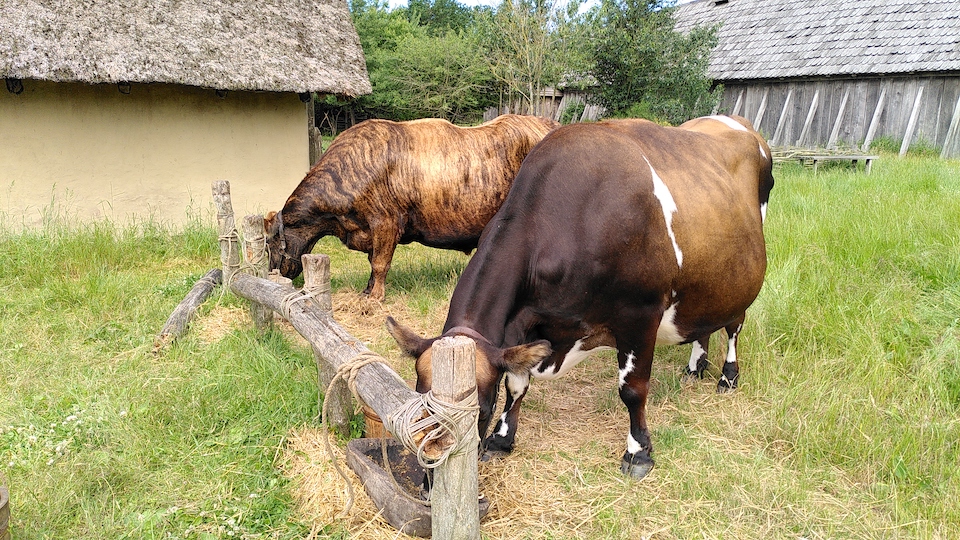
“Be careful”, says a young villager clad in simple Viking clothes. “She can be quite passive-aggressive!”
“No worries”, I laugh as I continue stroking the cat. As if to prove the point, she playfully nibbles on my hand, then returns to chillout mode. “We’re getting along well. I can handle passive-aggressive beings. I can be like that myself.”
Slowly moving along, I find my way to the archery range. A beautiful, blonde-haired, voluptuous shield maiden instructs me about the different kinds of arrows. “And what do you think is that one for?” she asks while pointing to an arrow with a blunt rounded wooden tip. A clever Heimdall guesses partly right: such arrows have been used for knocking out animals whose skin and fur shall remain unharmed, and – as the shield maiden reveals – especially for catching birds! This makes eminent sense when you consider that sharply pointed arrows would miss their target more readily and might also get stuck in higher tree branches.
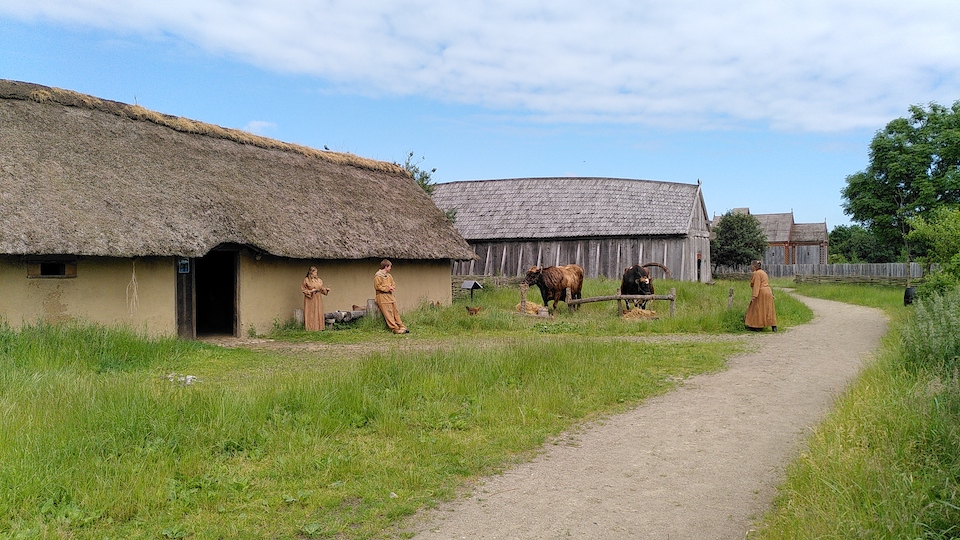
The archery range with its Viking longbows, arrows and targets is guarded by Björke. I am surprised by how fast the arrows fly, while confidently missing all shots. Björke defends my honour by declaring that this is the vegetarian archery style: you don’t shoot the dummy boar, but real plants instead! Even with my catastrophic track record, I can’t help but notice the meditative quality of archery. Björke resonates a lot with this observation and muses about Zen and the Art of Archery. Then he asks if I want to try one more shot with the strongest longbow. This is one of the moments in life in which I already know what comes next: this single shot will inevitably hit the target. And so it happens: the tension builds, the eye squints, the right hand releases, the bowstring whizzes, the arrow hisses, the air is cut, and the boar is pierced at the shoulder close to the neck. I might have felled the beast with that precision shot. Legolas would be proud!
Björke and I talk more about meditation, life, mythology, religion. We discover our shared delight about stories from the Edda, of Ginnungagap, Auðhumla, Ymir, Odin, Wili and Wé – “all of creation is actually brothers & sisters”, he says – and of course Heimdall, Loki, Thor and Freyja in the Þrymskviða, as well as our shared need for stillness and wilderness (a word that probably derives from Old English: “wild-deor-nes”). “I’m sometimes yearning for human connection”, Björke confides, “and I also need to spend time alone in the woods, to be only with nature.” This makes us brothers in spirit, forsooth. In these shared sacred moments we realize how little else we need: for we have everything here and now to be content. Mankind has more than enough of everything, if only it were fairly distributed. Wherefore such endless striving for more?
On the note of religion, I tell Björke about my encounter with Zhigger at the European Forum Alpbach 2017. The details of this story might perhaps forever remain too sacred to be fully shared in writing. Suffice it to say here that in the midst of a crowded Gasthaus Jakober in the heart of Alpbach, one Muslim and one Christian-Buddhist entered a sacred space of dialogue and touched paradise together, “meeting at source” on an infinitesimally small point – as if two pins, approaching from opposing sides, would precisely touch at their very atomic-scale tips. Since that day, I daresay that Zhigger and I know for certain – not from intellect, but through immediate experience – that all religious wars and human disputes about conflicting worldviews are nothing more but tragic mistakes. And we know in the same experiential manner that “meeting at source” can fundamentally heal such divides. I can barely imagine anything in this world that would make greater peace.
We have everything right here.
Wandering on, I meet Merlin from Estonia sitting in an open tent, selling handmade jewellery and puppets while meditatively knitting pot holders and other items. I am intrigued by a brass ring in the shape of a coiled snake that fits perfectly on my ring finger; curiously, the significance of a spiraling serpent – a symbol for Kundalini – eludes my conscious awareness at this point.
Merlin and I strike a conversation on the differences between natural and rural areas and cities in Estonia and other Baltic countries. “Once you’ve seen one city, you’ve seen all cities”, she asserts. I buy three handmade puppets and the brass ring. Putting it on my right-hand ring finger does not render me invisible, nor does it bestow other superpowers; yet it feels as though I am marrying myself, sealing an eternal bond of love.
Come to think of it, isn’t that a superpower in itself?
I still my hunger with a sandwich at the (far too modern) restaurant on site, before watching further attractions from the distance, including a Falconer show. Eventually, a growing unrest in my heart heralds the need to leave this beautiful place and return to Germany. Along the way I pay a short visit to the rather unspectacular Viking museum in Ribe. A certain kind of sadness fills my heart as I am passing the border from Denmark to Germany, saying farewell for now to these beautiful Viking lands. Yet there is also an inextinguishable fire within, in the shape of a tiny flickering flame, yet no less potent – and holding a deep knowing: I will return to these lands.
Back in Groß-Nordende, I spontaneously join a Zoom meeting with my “Kauri Tree Friends”, a group that had formed during the recent Mind & Life Summer Research Institute as a “Storysharing Pod”. As one participant shares about her “impostor syndrome”, I realize that this old friend of mine seems to have departed! I can no longer feel its presence in the old familiar ways. I wouldn’t be writing all of this here if I still suffered from impostor syndrome as I used to. Perhaps it is still hanging around in traces, but it no longer holds sway over me. This surprises me. Might the changes be subtle enough to not notice their unfolding in real time, yet they suddenly become apparent through momentary gazes into such mirrors of experience, of dialogue, of contemplation?
Soundtrack of the day:
I cannot remember any music from that day. But if I had known them at the time, I would surely have enjoyed listening to the mesmerizingly beautiful albums “Folkesange” by Myrkur and “Från Tidernas Begynnelse” by Hindarfjäll.
On that note: I also love Hindarfjäll’s rendition of “Þat Mælti Mín Móðir” featuring Peter Franzén (the actor of King Harold Finehair in “Vikings”!), artfully visualized by Grimfrost.

